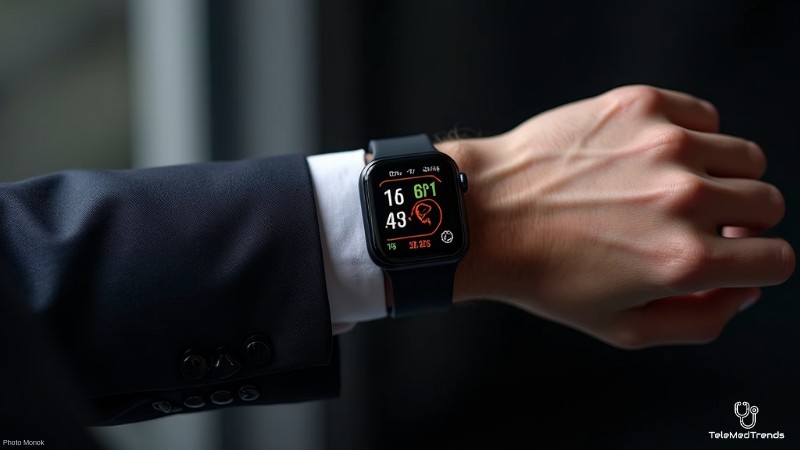In the United States, smartwatch technology is evolving rapidly, merging fashion with health management. Tech companies and luxury brands are creating stylish wearables with GPS, fitness tracking, voice commands, and contactless payments.
Smartwatches now balance functionality and design, appealing to professionals and everyday users.
Rising demand for innovation has fueled industry growth, with consumers seeking advanced health tracking without sacrificing aesthetics.
Key Takeaways
Smartwatch technology is rapidly evolving to merge fashion and advanced health tracking features, making them essential for both personal and professional use.
- Smartwatches now offer a blend of style and functionality with GPS, fitness tracking, voice commands, and contactless payments.
- Advancements in sensor technology enable precise health monitoring, including heart rate, blood oxygen levels, and ECG readings.
- Future innovations will enhance predictive health insights and integrate more FDA-approved tools for managing chronic conditions.
Smartwatch technology and its impact
Smart wearables blend style with innovation, offering advanced health tracking, AI-driven fitness insights, and seamless connectivity. As these features evolve, smartwatches are becoming essential for both personal and professional use.
Fashion trends in smartwatch design
As fashion brands embrace wearable technology, smartwatches become versatile accessories for casual and professional settings.
Sleek, minimalist designs ensure they pair effortlessly with any outfit, while customizable watch faces add a personal touch. This fusion of style and functionality drives demand for wearables beyond timekeeping.
With ongoing advancements, they are evolving into essential tools seamlessly integrating into daily life.
Advancements in sensor technology
Sophisticated sensor technology drives modern smartwatch advancements, making them essential for health management.
Equipped with biosensors, these devices track heart rate, blood oxygen levels, and ECG readings, providing precise health and fitness data. AI and machine learning enhance functionality by analyzing personal data to offer tailored recommendations, such as optimizing sleep schedules.
Beyond activity tracking, these devices detect behavioral changes that may signal health concerns, enabling early detection of issues like irregular heart rhythms or overtraining.
Fitness tracking features
These smart wearables are packed with features designed to improve fitness tracking. They not only count steps but also measure VO2 max, track menstrual cycles, and assess stress levels for a more complete picture of health.
With detailed activity insights and guided workouts using visual and audio cues, users receive real-time support tailored to their needs.
Personalized fitness plans adapt to factors like age, fitness level, and specific goals, while advanced models analyze movement to ensure proper exercise form, similar to a personal trainer.
Data transmission methods
Efficient data transmission is essential for wearables, enabling seamless connectivity between devices and apps.
Modern smartwatches rely on Bluetooth, Wi-Fi, and cellular networks to transmit health data, ensuring real-time syncing with fitness applications for a comprehensive activity overview. These connections enhance user experience, allowing effortless integration into daily routines.
For professionals, AI-powered voice commands provide hands-free task management, improving efficiency without interruptions.
Health data algorithms
The algorithms behind wearable health devices are sophisticated tools that transform raw sensor data into actionable insights.
AI-powered models can forecast health issues early, providing timely advice. They also evaluate recovery times by analyzing sleep quality, ensuring users are well-rested before engaging in strenuous activities.
By integrating data from various sources, these algorithms create a holistic view of an individual’s health status. Such a level of detail helps users make informed decisions about their daily routines and long-term wellness plans.
The role of smartwatches in modern workplaces
In the business world, smartwatches have become essential tools for managing tasks and time efficiently.
They enable employees to receive notifications, respond to emails, and manage calendars without reaching for their phones, keeping them connected and organized. This convenience boosts productivity by ensuring access to critical information at all times.
These devices also support role-specific apps—medical staff can monitor patients and receive emergency alerts, while engineers can quickly access blueprints and project timelines.
More than just fashion accessories, they enhance professional capabilities across various industries.
Future innovations
The future of smartwatch technology promises even more advanced features and capabilities. Wearables will deliver better health data and predictive insights as sensor accuracy improves.
These innovations will extend their role beyond fitness tracking, making them essential for managing chronic conditions.
By integrating with other connected devices, smartwatches will become even more versatile in daily life.
The inclusion of more FDA-approved health tools could further revolutionize personal health management.






